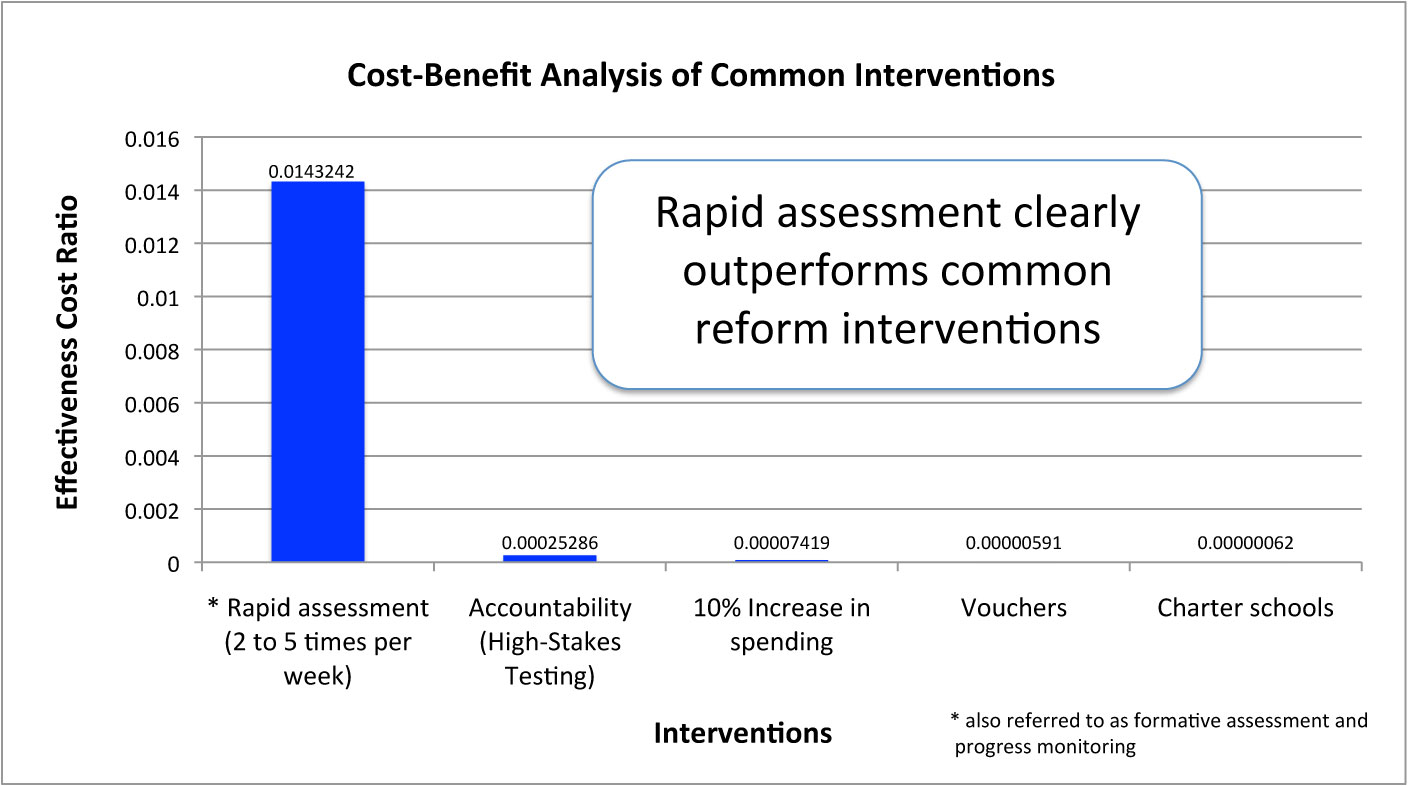What are the costs and benefits of five common educational interventions?
Why is this question important? Given the limited resources available for the education of children, it is important to select interventions that have the greatest impact we can afford.
See further discussion below.

Source(s): The Cost-Effectiveness of Five Policies for Improving Student Achievement
Result(s): The achievement of students who are rapidly assessed in math and reading is 4 times as effective as a 10% increase in per student expenses, 6 times as effective as voucher programs, 64 times as effective as charter schools, and 6 times as effective as increasing accountability. Dollar gains are more significant as the cost of rapid assessment is substantially smaller than any of the other interventions. The gain for rapid assessment is 193 times the gain accrued by increasing expenditures; 2,424 times the gains from vouchers; 23,166 the gains from charter schools; and 57 times the gains from accountability.
Implication(s): The obvious implication for stakeholders is the need to include a cost-benefit analysis when selecting interventions. Schools have limited resources and decision makers need to balance the impact of an intervention with the projected cost associated with the intervention. The results of many systems interventions cannot be justified when the enormous costs to achieve limited gains are considered.
Author(s): Stuart S. Yeh
Publisher(s): American Journal of Evaluation, 2007 (Sage Publications)
Study Description: The study compared the cost effectiveness of five common educational interventions. The study systematically analyzed the cost required to achieve student outcomes for rapid assessment (monitoring student progress two to five times per week), a 10% increase in spending, school vouchers, charter schools, and accountability (high-stakes testing). The study developed an effect size for each intervention, and integrated this information with the cost of each intervention for the purpose of better informing stakeholders confronted with policy decisions.
Definition(s):
- Rapid assessment: Systems that provide nonjudgmental testing feedback immediately after each test, two to five times per week, to students and teachers regarding student performance in subjects such as math or reading.
- Increased spending: 10% increase in per-pupil expenditure.
- Accountability: The use of high-stakes testing to hold schools accountable for improved student performance.
- Cost of an intervention: The value of the resources that are given up by society to implement the intervention, regardless of how those costs are reported by government entities.
Related Research:
Citation: Yeh, S. S. (2007). The Cost-Effectiveness of Five Policies for Improving Student Achievement, American Journal of Evaluation, 28(4), 416–436.
